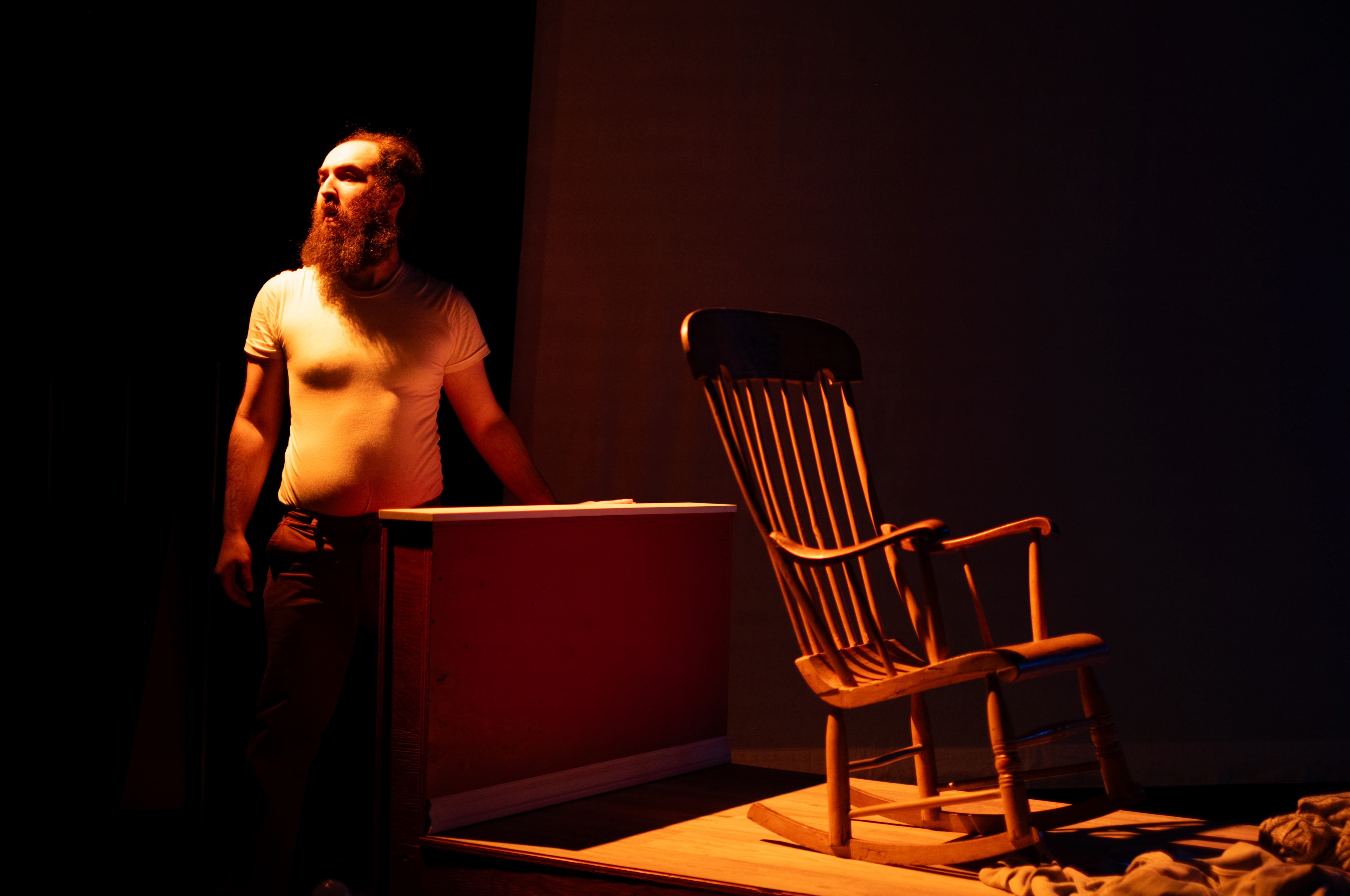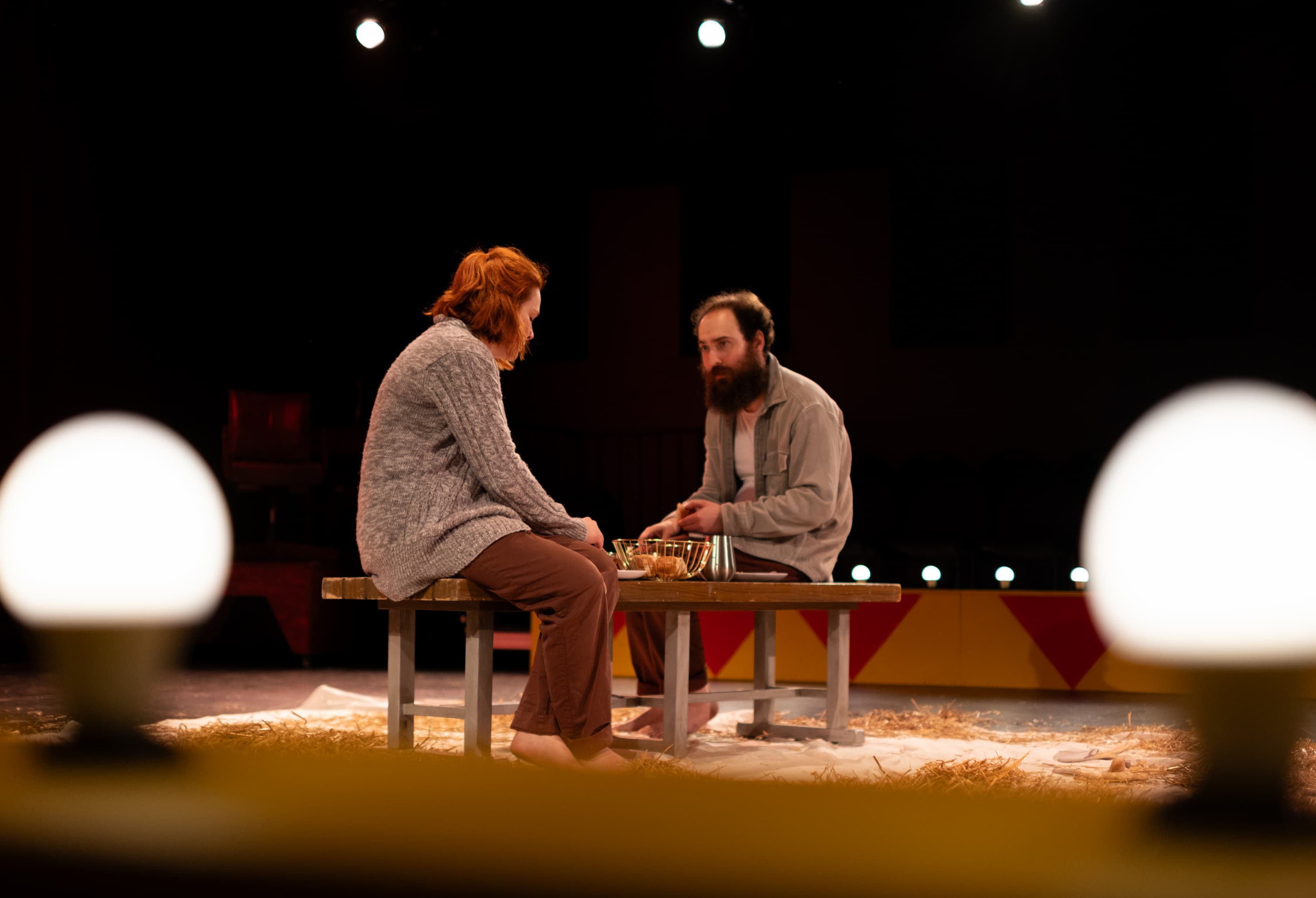An electric execution marked the tragic end of Topsy the Elephant in January 1903. The Edison Manufacturing Company dispatched a team to Luna Park in Coney Island to document the event, resulting in what is now regarded as the earliest film capturing the death of a living being. Topsy’s story caught a lot of attention at the time: it received national coverage, and it was at the centre of an intense debate about animal cruelty. This tragic death intrigued PhD candidate Alexander Offord, who wanted to write a historical paper as part of his scholarly work, but his research “just kept hitting all these dead ends, like I was not getting where I wanted to be.” The sources Offord tracked down kept pulling him away from the story he wanted to tell, but he was determined: “the way to do it would be through creative work.”
Offord, also the co-artistic director of Toronto-based theatrical company Good Old Neon, channelled his determination into writing a play titled Dead Elephants. This production intertwines Topsy's story with accounts of three other elephant deaths in the 19th century, alongside a modern storyline following a grieving couple. Through this creative endeavour, Offord explores the historical and contemporary implications of the boundary between the living and the deceased, as well as how individuals navigate grief and their relationships with animals, particularly elephants. The play also explores societal attitudes towards different species, highlighting the disparity in mourning rituals and emotional connections to various animals, such as a pigeon, an overlooked character that underscores the unequal regard for certain creatures in the face of death.

Offord's perspective not only offers a deep analysis of emotions, but the stories that inspired his play are also directly tied to the history of technology and coursework at the IHPST. Currently engaged in a reading course on animal history with Dr. Rebecca Woods, Offord seeks to further explore the deaths of elephants from an academic perspective with the guidance of his supervisor, Dr. Edward Jones-Imhotep. Beyond Topsy, the central elephant in his work, Offord explores the deaths of other elephants including Jumbo, purchased by P. T. Barnum, founder of Barnum & Bailey Circus, and Castor and Pollux, who were tragically killed and eaten during the 1870 siege of Paris amidst food scarcity due to the Prussian blockade. These events are closely related to the history of technology, as Offord explains: Topsy is part of “the history of electrification. She is publicly electrocuted to death, and she is electrocuted because her owners initially want to hang her from a crane as a public spectacle. The American Society for the Prevention of Cruelty to Animals launches this big kind of public relations campaign and they argue that this is cruel and inhumane, so they push for electrocution as a more humane alternative to hanging. There is this interesting focal pinch point when we transitioned away from hanging as a form of capital punishment to the electric chair, then also the electrification of the cities, and then the electrification of an animal. Jumbo the elephant is hit by a train. So, there is this collision between the animal and the machine in a literal sense". For Caster and Pollux “it takes a little more lateral thinking” when relating their final days to the history of technology. There's something about the desperation of that moment in Paris when they decide the elephants have ceased to be these exotic, beautiful, charismatic, named beings. And then they become food. They become an object for consumption in some way, literally fuel for a city through a siege”.
Both theatrical and historical narratives share commonalities throughout the research and writing process. This includes the initial task of discovering an idea, outlining and strategizing various approaches to its development, striving for a unique perspective, and frequently becoming obsessed with the project. Ultimately, as Offord emphasizes, there will always be an audience engaging with your creation, whether it be a play, an article, a book chapter, or any other form of expression, “this piece will take an audience member, a reader, through your thinking and into your world and into the way that you're seeing the world. And so, you have to use different strategies, and there are certain cultural rules that you have to deploy. In my theater work, I am much less of a stickler for historical accuracy, which I would be much more particular about in my historical writing. But [theater and academia] are both ways of trying to understand the world, and they're both ways of trying to connect to another person's consciousness.”
This is not the first time history has encouraged Alexander Offord to go beyond the boundaries of academic spaces and papers. For instance, he collaborated with Professor Woods on a children's play titled The Last Mammoth that examined climate change, environmental conservation, and animal extinction. This innovative project aimed to demonstrate how historical research could be effectively used at schools. Dead Elephants is a play for a diverse adult audience, and Offord emphasizes why it could be attractive for academic researchers “the show will appeal to scholars who are interested in pushing the boundaries of not only what scholarship can be, but also what the dissemination of scholarship can be, and opening fresh possibilities for how we can actually make history. There's lots of space for new directions and, embracing the affective dimension of historical writing and how we can actually move people not only intellectually but in their hearts as well.”



